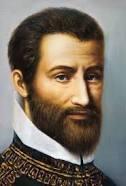Planning worship?
Check out our sister site, ZeteoSearch.org,
for 20+ additional resources related to your search.
- |
User Links
Search Results
Findou-se a Luta de Jesus
Author: Sarah Poulton Kalley Meter: 8.8.8.4 Appears in 2 hymnals Used With Tune: VICTORY Text Sources: Latin Hymn, 1695
Findou-se a Luta de Jesus
FINITA JAM SUNT PRAELIA
Appears in 1 hymnal Composer and/or Arranger: James Minchin Tune Key: D Major Used With Text: Findou-se a Luta de Jesus
FINITA JAM SUNT PRAELIA
Findou-se a Luta de Jesus
Author: Sarah Poulton Kalley Hymnal: Hinário para o Culto Cristão #142 (1991) Refrain First Line: Aleluia, aleluia Languages: Portuguese Tune Title: FINITA JAM SUNT PRAELIA
Findou-se a Luta de Jesus
Findou-se a Luta de Jesus
Author: Sarah Poulton Kalley Hymnal: Hinário para o Culto Cristão #144 (1991) Meter: 8.8.8.4 Languages: Portuguese Tune Title: VICTORY
Findou-se a Luta de Jesus
William Henry Monk

1823 - 1889 Arranger of "VICTORY" in Hinário para o Culto Cristão William H. Monk (b. Brompton, London, England, 1823; d. London, 1889) is best known for his music editing of Hymns Ancient and Modern (1861, 1868; 1875, and 1889 editions). He also adapted music from plainsong and added accompaniments for Introits for Use Throughout the Year, a book issued with that famous hymnal. Beginning in his teenage years, Monk held a number of musical positions. He became choirmaster at King's College in London in 1847 and was organist and choirmaster at St. Matthias, Stoke Newington, from 1852 to 1889, where he was influenced by the Oxford Movement. At St. Matthias, Monk also began daily choral services with the choir leading the congregation in music chosen according to the church year, including psalms chanted to plainsong. He composed over fifty hymn tunes and edited The Scottish Hymnal (1872 edition) and Wordsworth's Hymns for the Holy Year (1862) as well as the periodical Parish Choir (1840-1851).
Bert Polman
William Henry Monk
Giovanni Pierluigi da Palestrina

1525 - 1594 Composer of "VICTORY" in Hinário para o Culto Cristão Giovanni Pierluigi (da Palestrina) Italy 1525-1594. Born at Palestrina, Italy, near Rome, then part of the Papal States to Neopolitan parents. As a youth he became a chorister at the Santa Maria Maggiore basilica in the Rome Diocese. This allowed him to learn literature and music. In 1540 he moved to Rome, where he studied in the school ofr the Hugenot, Claude Goudimel. He also studied with Robin Mallapert and Firmin Lebel. Orlando Di Lasso was also a musical advisor to him. From 1544-1551 he was organist at the Cathedral of St Agapito, the principle church of his native city. In 1547 he married Lucrezia Gori, and they had four children: Rodolfo, Angelo, Iginio, and a daughter. In 1551 Pope Julius III (previously Bishop of Palestrina) appointed him ‘maestro di cappella’, or musical director of the Cappella Giulia (choir). Pierluigi dedicated his first published compositions to Pope Julius III (1554), known as ‘the book of Masses’. It was the first book of masses by a native composer, since most sacred works in those days were from low countries (France or Spain). In 1555 Pope Paul IV ordered that all papal choristers should be clerical. As Pierluigi married early in life and had four children, he was unable to continue in the chapel as a layman. During the next decade he held positions similar to his Julian Chapel appointment at other chapels and churches in Rome, including St John Lateran (1555-1560), and Santa Maria Maggiore (1561-1566). In 1571 he returned to the Julian Chapel and remained at St Peter’s for the rest of his life. The 1570s was a decade of difficulty for him, as he lost his brother, two sons, and his wife in three separate outbreaks of plague (1572-1575-1580). In 1578 he was given the title of ‘Master of Music’ at the Vatican Basilica. He thought of becoming a priest at this time, but instead married a wealthy widow, Virginia Formoli, in 1581, widow of a wealthy merchant, which gave him financial independence (he was not well-paid as choirmaster). He spent considerable time administering to her fortune, but also was able to compose prolifically until his death. He also helped to found an association of professional musicians called the Vertuosa Compagnia dei Musici. He died in Rome of pleurisy. He left hundreds of compositions, including 1045 masses, 68 offertories, 140 madrigals, 300+ motets, 72 hymns, 35 magnificats, 11 litanies and several sets of lamentations. There are two comprehensive editions of his works: a 33-volume edition published by Breitkopf and Hartel, in Leigzig, Germany, between 1862-1894, edited by Franz Xaver Habert, and a 34-volume edition published in the mid 20th century by Fratelli Scalera, in Rome, Italy, edited by R Casimiri and others. As a Renaissance musician and composer of sacred music he was the best known 16th century representative of the Roman School of musical composition. He had a long-lasting influence on the development of church and secular music in Europe, especially on the development of counterpoint, his work considered the culmination of Renaissance polyphony. Very famous in his day, he was considered by some the legendary ‘savior of church music’. A 2009 film was produced by German television about him, titled: ‘Palestrina – Prince of Music’.
John Perry
Giovanni Pierluigi da Palestrina
Sarah Poulton Kalley
1825 - 1907 Translator of "Findou-se a Luta de Jesus" in Hinário para o Culto Cristão Born in Nottingaham, England in 1825. Married Scottish physician and missionary Robert Reid Kalley. Together they went to Brazil. She wrote many hymns and was instrumental in organizing Salmos e Hinos the first Brazilian evangelical hymnal in the Portuguese language, first used at Igreja Evangélica Fluminense in 1861.
Sarah Poulton Kalley


 My Starred Hymns
My Starred Hymns


